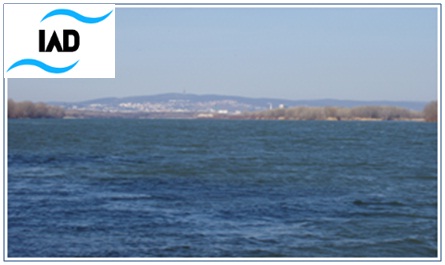
The 42nd IAD Conference
Conference Overview
The second largest European river, the Danube drains water from 19 countries from the Black Forest to the Black Sea, encompassing a basin of over 800.000 km2. The Danube River basin represents 35% of the Black Sea catchment area, bringing around 50% of its tributaries water flow (around 827 km 3 yearly), representing hence one of the main drivers of the Black Sea ecological status.
The changes of the Danube River – Danube Delta – Black Sea geologic dynamics along time is reflected in the physical landscape changes (river courses and sea shore lines, sediment deposition, fluctuations of terrestrial-aquatic areas, altitudinal base level changes, and etc.) reveal a complex mosaic of significant elements, forming the fundament of a complex spatial geosystem offering till today exquisite natural products and services to the riverine human society.
Still, the human impact, especially in the last two centuries intensified, inducing a decreasing trend of the goods and services provided by the Danube ecosystems. For this reason, a permanent international cooperation in scientific research, assessment, monitoring and also management of ecological and socio-economic needs, are crucial for the sustainable development of the Danube River – Black Sea region.
The International Association for Danube Research was founded in 1956 with the aim of promoting and coordinating activities in the fields of limnology, water management, water protection and sustainable development in the Danube River basin. Since 1998, IAD has become observer and participated actively in the various expert groups of the International Commission for the Protection of the Danube River (ICPDR), contributing to the development of the Danube River Basin Management Plan the Joint Statement for Navigation, the draft Guidelines for Hydropower in the Danube Region, the Sturgeon Action Plan and the Sturgeon 2020 Program.
The 42th IAD conference will provide a forum for the long-term multidisciplinary research activities and discussions on various topics which reveal the importance of different types of watercourses for the Danube Basin, as well as the interlinkage with the marine area, highlighting the need to protect the biodiversity of this unique area.
Topics
1. Bio- and geodiversity - from headwaters to marine environment: values and threats.
2. Fish-ecology as basis to ensure sustainable fishery practices.
3. The importance of vegetation for the aquatic environment.
4. Structure and development of invertebrate communities.
5. Water quality monitoring and quality targets for local uses of river water.
6. Microbiological quality of Danube ecosystems.
7. Ecotoxicological impact of aquatic contaminants.
8. Transformations and connectivity fluxes between river structures.
9. Evolution of the Danube River Basin: history, ecosystem services, restoration and conservation.
10. Floods and droughts and climate changes impact - river responses and public perception.
11. Sustainable development in the Danube River Basin: strategy and policy in Danube Basin.